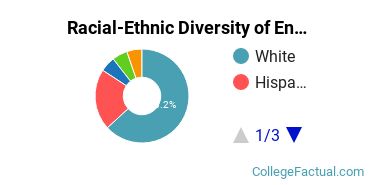 by our College Data Analytics Team
by our College Data Analytics TeamEnglish is a concentration offered under the general English literature major at Rollins College. Here, you’ll find out more about the major bachelor’s degree program in English language, including such details as the number of graduates, diversity of students, and more.
You can jump to any section of this page using the links below:
Learn about start dates, transferring credits, availability of financial aid, and more by contacting the universities below.
BA in English Language & Literature
Turn your love of reading and writing into a career with this online bachelor's from Southern New Hampshire University.
In 2019-2020, the average part-time undergraduate tuition at Rollins was $503 per credit hour for both in-state and out-of-state students. The following table shows the average full-time tuition and fees for undergraduates.
| In State | Out of State | |
|---|---|---|
| Tuition | $53,716 | $53,716 |
| Books and Supplies | $860 | $860 |
| On Campus Room and Board | $15,000 | $15,000 |
| On Campus Other Expenses | $2,980 | $2,980 |
Learn more about Rollins tuition and fees.
Rollins does not offer an online option for its English language bachelor’s degree program at this time. To see if the school offers distance learning options in other areas, visit the Rollins Online Learning page.
Of the students who received their bachelor’s degree in English language in 2019-2020, 82.8% of them were women. This is higher than the nationwide number of 73.0%.

Racial-ethnic minority graduates* made up 20.7% of the English language bachelor’s degrees at Rollins in 2019-2020. This is lower than the nationwide number of 32%.

| Race/Ethnicity | Number of Students |
|---|---|
| Asian | 0 |
| Black or African American | 1 |
| Hispanic or Latino | 5 |
| Native American or Alaska Native | 0 |
| Native Hawaiian or Pacific Islander | 0 |
| White | 20 |
| International Students | 2 |
| Other Races/Ethnicities | 1 |
*The racial-ethnic minorities count is calculated by taking the total number of students and subtracting white students, international students, and students whose race/ethnicity was unknown. This number is then divided by the total number of students at the school to obtain the racial-ethnic minorities percentage.
More about our data sources and methodologies.